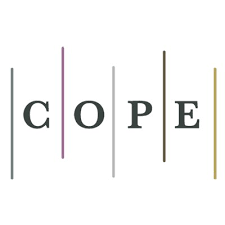Fuzzy Robust Optimization in Closed-Loop Supply Chain Network Model for Hazardous Products (Lead-Acid Battery)
DOI:
https://doi.org/10.52547/ijimes.2.2.61DOR:
https://dorl.net/dor/20.1001.1.27832678.2022.2.2.6.5Keywords:
Closed Loop Supply Chain, Fuzzy Robust Optimization, Hazardous Products, Lead Acid BatteryAbstract
Purpose: This paper models a closed-loop supply chain network problem for hazardous products in the face of demand uncertainty and variable costs. The designed model includes a set of suppliers, production centers, distribution, recycling, disposal, collection and end customers in which strategic and tactical decisions are made simultaneously. Among the decisions made in this paper is the location of production, distribution and collection centers and determining the optimal amount of product flow between the levels of the supply chain network.
Methodology: In this paper, the Epsilon constraint method is used to solve a multi-objective model in GMAS software. This article also uses uniform data to solve the problem.
Findings: The results of solving the model with fuzzy robust optimization method show that with increasing the uncertainty rate and also reducing the transfer time of hazardous products, the total network costs as well as the amount of greenhouse gas emissions have increased. Also, the study of Pareto front to optimize the total design costs and the amount of greenhouse gas emissions shows that by reducing the amount of greenhouse gas emissions in the network, the costs related to location and routing increase.
Originality/Value: In this paper a fuzzy robust optimization is used in closed-loop supply chain network model for hazardous products (Lead-Acid Battery).
Downloads
References
Court, C. D., Munday, M., Roberts, A., & Turner, K. (2015). Can hazardous waste supply chain ‘hotspots’ be identified using an input–output framework?. European Journal of Operational Research, 241(1), 177-187. https://doi.org/10.1016/j.ejor.2014.08.011
Mohri, S. S., Mohammadi, M., Gendreau, M., Pirayesh, A., Ghasemaghaei, A., & Salehi, V. (2021). Hazardous material transportation problems: A comprehensive overview of models and solution approaches. European Journal of Operational Research. https://doi.org/10.1016/j.ejor.2021.11.045
Hu, H., Du, J., Li, X., Shang, C., & Shen, Q. (2020). Risk models for hazardous material transportation subject to weight variation considerations. IEEE Transactions on Fuzzy Systems, 29(8), 2271-2282. DOI: 10.1109/TFUZZ.2020.2997467
Ma, H., Li, X., & Liu, Y. (2020). Multi-period multi-scenario optimal design for closed-loop supply chain network of hazardous products with consideration of facility expansion. Soft Computing, 24(4), 2769-2780. https://doi.org/10.1007/s00500-019-04435-z
Nozari, H., Ghahremani-Nahr, J., & Szmelter-Jarosz, A. (2022). A multi-stage stochastic inventory management model for transport companies including several different transport modes. International Journal of Management Science and Engineering Management, 1-11. https://doi.org/10.1080/17509653.2022.2042747
Ghahremani Nahr, J., Kian, R., & Rezazadeh, H. (2018). A modified priority-based encoding for design of a closed-loop supply chain network using a discrete league championship algorithm. Mathematical problems in engineering, 2018. https://doi.org/10.1155/2018/8163927
Yang, Q., Chin, K. S., & Li, Y. L. (2018). A quality function deployment-based framework for the risk management of hazardous material transportation process. Journal of Loss Prevention in the Process Industries, 52, 81-92. https://doi.org/10.1016/j.jlp.2018.02.001
Degla, A., Chikh, M., Chouder, A., Bouchafaa, F., & Taallah, A. (2018). Update battery model for photovoltaic application based on comparative analysis and parameter identification of lead–acid battery models behaviour. IET Renewable Power Generation, 12(4), 484-493.
Szmelter-Jarosz, A., Ghahremani-Nahr, J., & Nozari, H. (2021). A neutrosophic fuzzy optimisation model for optimal sustainable closed-loop supply chain network during COVID-19. Journal of Risk and Financial Management, 14(11), 519. https://doi.org/10.3390/jrfm14110519
Subulan, K., Taşan, A. S., & Baykasoğlu, A. (2015). A fuzzy goal programming model to strategic planning problem of a lead/acid battery closed-loop supply chain. Journal of Manufacturing Systems, 37, 243-264. https://doi.org/10.1016/j.jmsy.2014.09.001
Ko, H. J., & Evans, G. W. (2007). A genetic algorithm-based heuristic for the dynamic integrated forward/reverse logistics network for 3PLs. Computers & Operations Research, 34(2), 346-366. https://doi.org/10.1016/j.cor.2005.03.004
Kannan, G., Sasikumar, P., & Devika, K. (2010). A genetic algorithm approach for solving a closed loop supply chain model: A case of battery recycling. Applied mathematical modelling, 34(3), 655-670. https://doi.org/10.1016/j.apm.2009.06.021
Sasikumar, P., & Haq, A. N. (2011). Integration of closed loop distribution supply chain network and 3PRLP selection for the case of battery recycling. International Journal of Production Research, 49(11), 3363-3385. https://doi.org/10.1080/00207541003794876
Pishvaee, M. S., Rabbani, M., & Torabi, S. A. (2011). A robust optimization approach to closed-loop supply chain network design under uncertainty. Applied mathematical modelling, 35(2), 637-649. https://doi.org/10.1016/j.apm.2010.07.013
Carle, M. A., Martel, A., & Zufferey, N. (2012). The CAT metaheuristic for the solution of multi-period activity-based supply chain network design problems. International Journal of Production Economics, 139(2), 664-677. https://doi.org/10.1016/j.ijpe.2012.06.016
Pazhani, S., Ramkumar, N., Narendran, T. T., & Ganesh, K. (2013). A bi-objective network design model for multi-period, multi-product closed-loop supply chain. Journal of industrial and production engineering, 30(4), 264-280. https://doi.org/10.1080/21681015.2013.830648
Hatefi, S. M., & Jolai, F. (2014). Robust and reliable forward–reverse logistics network design under demand uncertainty and facility disruptions. Applied mathematical modelling, 38(9-10), 2630-2647. https://doi.org/10.1016/j.apm.2013.11.002
Özceylan, E., Paksoy, T., & Bektaş, T. (2014). Modeling and optimizing the integrated problem of closed-loop supply chain network design and disassembly line balancing. Transportation research part E: logistics and transportation review, 61, 142-164. https://doi.org/10.1016/j.tre.2013.11.001
Jabbarzadeh, A., Fahimnia, B., & Seuring, S. (2014). Dynamic supply chain network design for the supply of blood in disasters: A robust model with real world application. Transportation Research Part E: Logistics and Transportation Review, 70, 225-244. https://doi.org/10.1016/j.tre.2014.06.003
Zeballos, L. J., Méndez, C. A., & Barbosa-Povoa, A. P. (2016). Design and planning of closed-loop supply chains: a risk-averse multistage stochastic approach. Industrial & Engineering Chemistry Research, 55(21), 6236-6249. https://doi.org/10.1021/acs.iecr.5b03647
Zhalechian, M., Tavakkoli-Moghaddam, R., Zahiri, B., & Mohammadi, M. (2016). Sustainable design of a closed-loop location-routing-inventory supply chain network under mixed uncertainty. Transportation Research Part E: Logistics and Transportation Review, 89, 182-214. https://doi.org/10.1016/j.tre.2016.02.011
Zhang, Z. H., & Unnikrishnan, A. (2016). A coordinated location-inventory problem in closed-loop supply chain. Transportation Research Part B: Methodological, 89, 127-148. https://doi.org/10.1016/j.trb.2016.04.006
Hafezalkotob, A., Khalili-Damghani, K., & Ghashami, S. S. (2016). A three-echelon multi-objective multi-period multi-product supply chain network design problem: A goal programming approach. Journal of Optimization in Industrial Engineering, 10(21), 67-78. DOI: 10.22094/joie.2016.262
Ma, H., & Li, X. (2018). Closed-loop supply chain network design for hazardous products with uncertain demands and returns. Applied Soft Computing, 68, 889-899. https://doi.org/10.1016/j.asoc.2017.10.027
Mohammed, F., Selim, S. Z., Hassan, A., & Syed, M. N. (2017). Multi-period planning of closed-loop supply chain with carbon policies under uncertainty. Transportation Research Part D: Transport and Environment, 51, 146-172. https://doi.org/10.1016/j.trd.2016.10.033
Nayeri, S., Paydar, M. M., Asadi-Gangraj, E., & Emami, S. (2020). Multi-objective fuzzy robust optimization approach to sustainable closed-loop supply chain network design. Computers & Industrial Engineering, 148, 106716. https://doi.org/10.1016/j.cie.2020.106716
Liu, Z., Wu, Y., Liu, T., Wang, X., Li, W., Yin, Y., & Xiao, X. (2021). Double Path Optimization of Transport of Industrial Hazardous Waste Based on Green Supply Chain Management. Sustainability, 13(9), 5215. https://doi.org/10.3390/su13095215
Takhar, S. S., & Liyanage, K. (2021). Transforming product labels using digital technologies to enable enhanced traceability and management of hazardous chemicals. International Journal of Supply Chain and Operations Resilience, 5(1), 27-59.
Mohabbati-Kalejahi, N., & Vinel, A. (2021). Robust Hazardous Materials Closed-Loop Supply Chain Network Design with Emergency Response Teams Location. Transportation Research Record, 2675(6), 306-329. https://doi.org/10.1177/0361198121992071
Ke, G. Y. (2022). Managing reliable emergency logistics for hazardous materials: A two-stage robust optimization approach. Computers & Operations Research, 138, 105557. https://doi.org/10.1016/j.cor.2021.105557
Zarei, E., Gholamizadeh, K., Khan, F., & Khakzad, N. (2022). A dynamic domino effect risk analysis model for rail transport of hazardous material. Journal of Loss Prevention in the Process Industries, 74, 104666. https://doi.org/10.1016/j.jlp.2021.104666.
Published
How to Cite
Issue
Section
License
Copyright (c) 2022 Danial Rashidi Meybodi, Hamed Tayebi, Sina Laleh

This work is licensed under a Creative Commons Attribution 4.0 International License.












